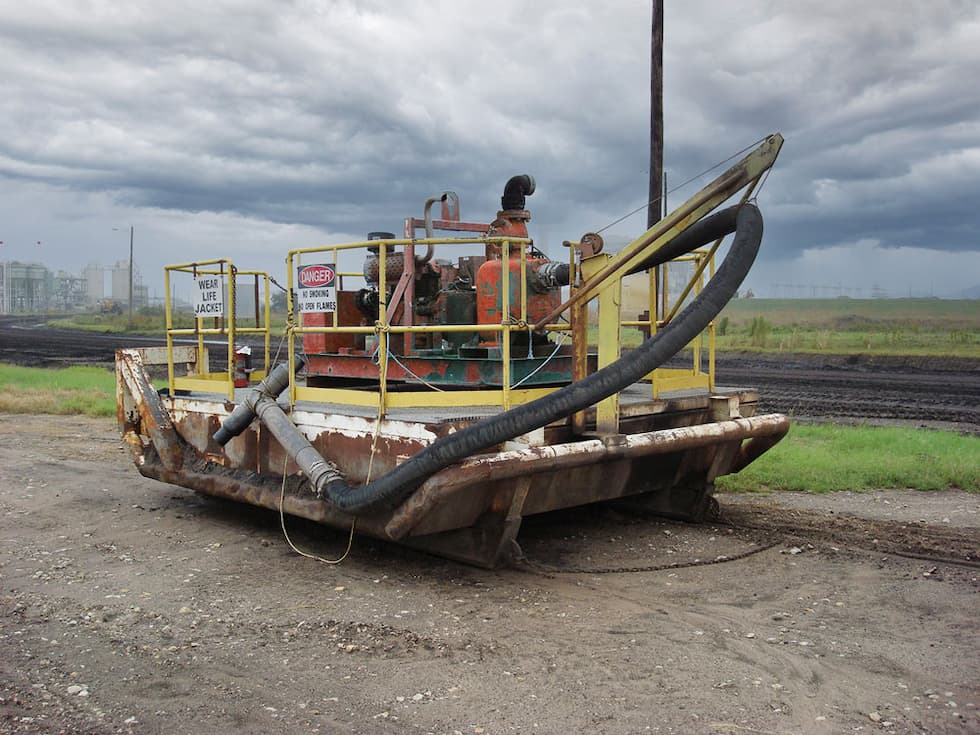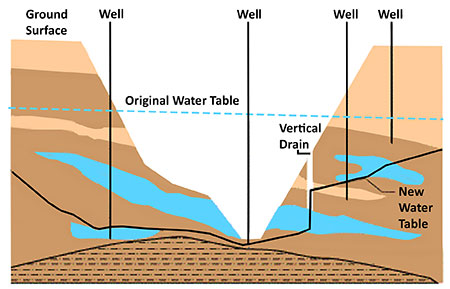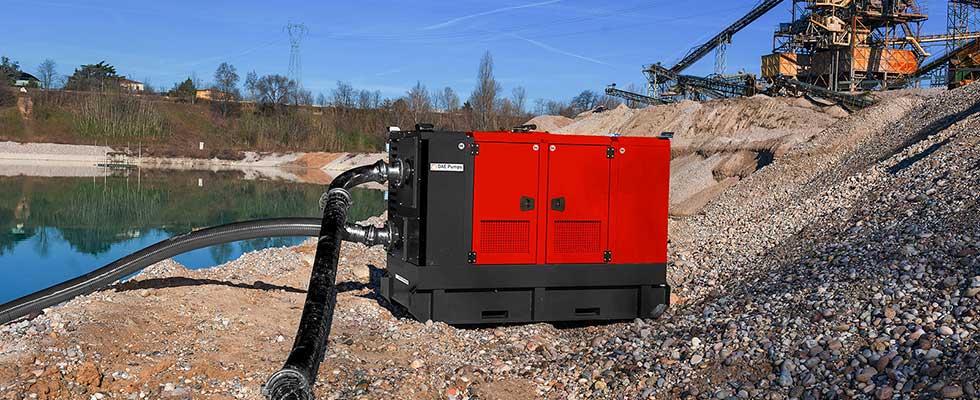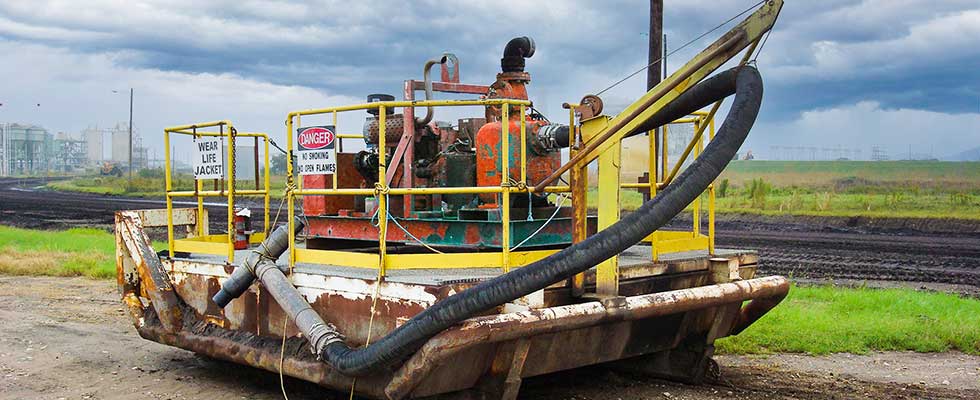
Dewatering is an essential process of removing water from a location—virtually every mine site needs to account for dewatering at some point in time. Most mine operations are susceptible to flooding—some more than others. The geographic location and climate of the area play a major factor in dewatering needs. Heavy rainfall, water tables, nearby rivers and lakes can lead to catastrophic flooding that shuts down operations with costly results.
Safety is a top priority in all mining operations. Working around heavy equipment all day is hard, tiring and dangerous. Hazards are present everywhere. From swinging excavator arms to loose rocks and rainy, wet conditions, controlling the environment and situations around every miner is essential. Calculating scenarios and being cautious is critical to controlling and limiting the daily risks while being productive.

Assessment of dewatering needs is important at every mine. The exact nature of potential disruption depends on the mine location, mine type and access routes for logistics and transport. Mines located in dry regions may be particularly susceptible to an underestimation of the risk, while some underground mines risk groundwater infiltrating the mine workings. In any case, depending on the geological settings, dewatering is fundamental to the viability of the mine. The mine may require the use of large resources and management, along with good planning and risk assessment to avoid environmental complications and human loss or injury.
Identifying and establishing a proper pump dewatering system is essential for continuing operations. The type of pump system each mine develops is dependent on the location and climate of the mine. With a proper system and backup, dewatering keeps the mine operating successfully and prepared for reducing future flooding concerns and risks.

Mine Flooding Safety
Mine flooding is a serious concern of open-pit and underground mining operations. There is a variety of ways these operations can be exposed to flooding and numerous methods for preventing flooding. Exploring all the potential scenarios before operating and throughout operations is essential for limiting and avoiding potentially deadly and costly flood issues.
The changing landscape at most mines means that mine operations must continually reassess their risk and exposure to flood-related impacts and damage. Many mine sites are in remote areas with poor records of rainfall and streamflow, thereby increasing the uncertainty of the calculated flood risk. Mine safety goes beyond just the area of the mine operation. The surrounding cities, environment, trees, plants, people and animals can all be affected by mine flooding as new minerals and toxins may be introduced to the nearby settings. Limiting exposure is always of great concern.
Planning for Dewatering
When planning a flood management system for a mining site, the risks associated with floodplain mining should be identified, analyzed and evaluated. Since these operations run for a long time, the recurring need for water removal without causing damage to the environment and avoiding hazards for the workers is critical.
There are many factors that lead to mine flooding. Waters that flood open-pit mines can range from drinking water quality to acidic waters that can kill animals. Flooding usually occurs when the pit reaches below the water table, overflowing rivers and dams, or through extensive heavy rainfall.
As for underground mines, flooding is usually controlled because these types of mines are not directly influenced by surface waters, so the real concern is how to deal with underground water. Usually, to keep flooding under control in underground mines, users need to consider:
- Removing potential water hazards
- Filling surfaces that might collapse during or after the flooding process
- Installing water diversion systems
- Installing, at both the surface and underground, a system to monitor hydrogeological and geotechnical aspects
- Projecting hydrological and hydrogeochemical development of mine waters
When a mine extends below the water table, due to gravity, the groundwater will infiltrate mine workings. The constant influx leads to flooding and the only way to stop the water is by reducing the water table or continually pumping out the water (Image 1).
Mine Flooding Assessment
Flood risk to underground and aboveground mining operations can result from ingress of groundwater or uncontrolled surface runoff, such as from flash flooding after heavy rains. Flooding can destabilize pit walls resulting in a mine collapse and loss of life and heavy machinery.

Mining activities by their nature have a large topographic footprint and will invariably have significant interaction with the local drainage system. Mine developments will often require diversions of creeks and rivers. Mines are also likely to increase flood risks in surrounding areas due to floodplain storage loss resulting from flood mitigation measures for the mine. The consequences of a low likelihood flood inundation event can be catastrophic for the mining operations and the mine viability. The floodwaters can also become contaminated with minerals, salts and suspended sediments. They cannot be pumped out due to contamination risk in the neighboring environment, which can lead to suspension of the mine operations.
It is critical to have a reliable estimate of flood levels for the specification of flood protection structures such as levees and dams. Levees are often considered in the context of addressing the risk from flooding. However, the consequences of levee failure during a flood are often not addressed properly. Levees are also susceptible to settlement on mine sites, which increases flood risks over time. Flooding can result in the suspension of operations due to:
- erosion and poor road conditions
- water buildup at working faces and in mining areas
- inadequate on-site storage and the inability to discharge accumulated runoff to surface water
- damage to infrastructure, such as road, rail and conveyor systems
- catastrophic inundation from surrounding rivers due to levee failure
Each of these will have different design criteria, costs and failure modes.
Dewatering Pump Systems
To prevent water from entering mines, ongoing systems of boreholes and pump stations are installed; these are critical for the continuous dewatering of mining operations at the working mine face. Having an adequate arrangement of pumps that is appropriate to the local flood risk is critical. Levee banks are another important defense against floods. In flood-prone areas, these are being rebuilt regularly and to an improved standard.
Compared to ground failure events, flooding results in extra property damage costs beyond damage to machinery. Rain can cause havoc on a mine site, so making sure there is proper drainage is essential. Water must be pumped out of the flooded pits, mud removed and levees rebuilt. Flooding of a long wall (an automated form of underground coal mining along flat seams) can be particularly costly as the equipment cannot be moved. In mining insurance, losses associated with flooding are, therefore, assumed to exceed losses due to ground failure.
Many mining operations use a system for dewatering rainfall with diesel-powered, self-priming pumps or submersible slurry pumps and drainage pumps with high head capabilities. Often because of the height of the mining operation, additional booster pumps are used to overcome the large vertical lift and any extra pumping distance. They are positioned at multiple levels to help raise the water and debris from the bottom of the pit.
Some mining operations implement heavy-duty, self-priming pump systems with high kilowatts (kW) of power that are positioned on skids with pontoons. When rain is in the forecast, they are dragged to the lowest spot of the mine where water is most likely to accumulate. As the rainwater gathers, the self-priming pumps begin to float on the water. Equipped with a float switch, once the system begins to rise, the engine automatically starts and activates the pump. As the water level lowers, the pumps then automatically shut off.
The nature of these pumps requires them to not only pump water but also large abrasive solids and debris that get washed in. These pumps require the high head capability for pumping up the steep inclines of the mine pit walls. Dewatering mine pumps and their parts are made of rugged material for handling the abrasive solids that get suctioned into the pump along with the rainwater.
Managing the full process of dewatering begins and ends with a well-designed plan that results in a complete program. From planning and assessing to safety and the dewatering pumps, mine dewatering is an essential part of every operation no matter the climate or location.

